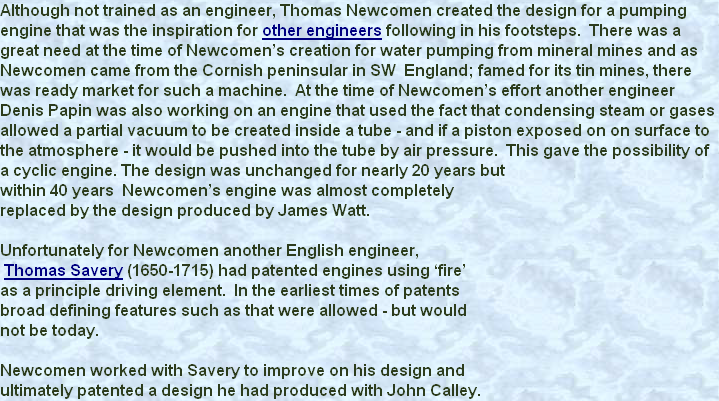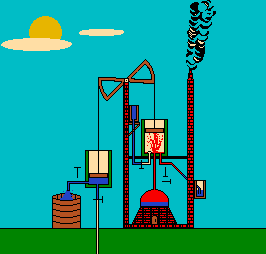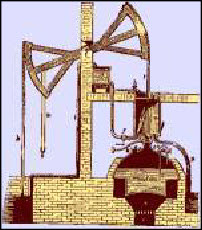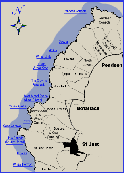




12th November 2010
Engineers & Engineering



Drawing from around 1712
earlier designs that required condensation - and so the formation of the vacuum - to happen naturally. Although not trained as an engineer, Thomas Newcomen created the design for a pumping engine that was the inspiration for other engineers following in his footsteps. There was a great need at the time of Newcomen’s creation for water pumping from mineral mines and as Newcomen came from Dartmouth in Devon - adjacent to the Cornish peninsular in SW England; famed for its tin mines, there was ready market for such a machine. At the time of Newcomen’s effort another engineer Denis Papin was also working on an engine that used the fact that
condensing steam or gases allowed a partial vacuum to be created inside a tube - and if a piston exposed on on surface to the atmosphere - it would be pushed into the tube by air pressure. This gave the possibility of a cyclic engine.
This new engine had a much more rapid stroke rate than the
From Newcomen’s early Iron-working in Dartmouth, South-West England, his
Success depended - as did that of many of his time - on the rapid expansion
of industrialisation and manufacturing - and easier ways to access mines.
The existence of copper, tin and arsenic mining in Cornwall -
and with many of the mines extending far out beneath the sea bed itself there was a considerable demand for pumping systems. Early efforts had depended on buckets, ropes and horse-power so a mechanical means was clearly something that would gain rapid and expanding use.




